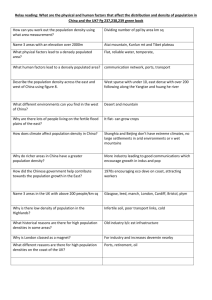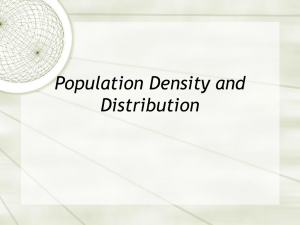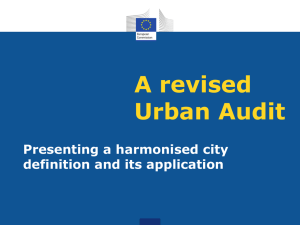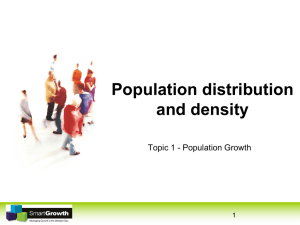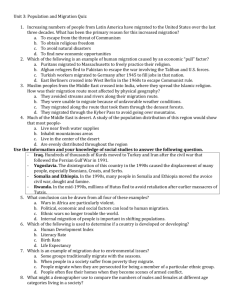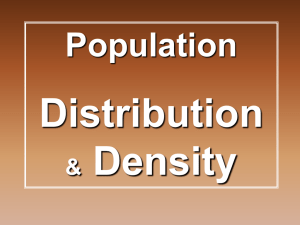3202 Unit 6-1 Population Distributionx
advertisement
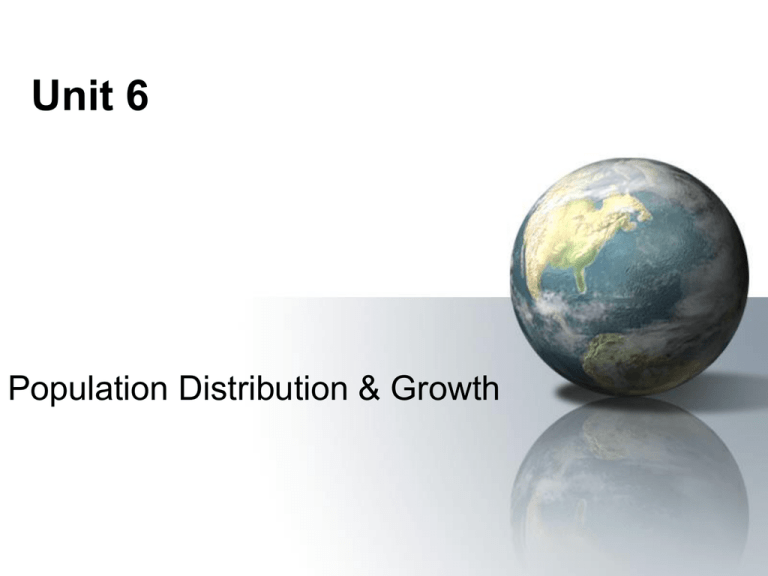
Unit 6 Population Distribution & Growth Population Density • Refers to the number of people in a certain area of land • A ratio can be calculated by: Population ÷ land area = number of people per unit of land Using NL for example: • 551,792 (Population) ÷ 405,720 km2 (Land Area) = 1.36 • There is 1.36 people/km2 Population Density • What is the population density of: Bangladesh – Population 127,117,967 – Land Area 133,910 km2 POPULATION DENSITY = 949 people/ km2 Brazil – Population 171,853,126 – Land Area 8,456,510 km2 POPULATION DENSITY = 20 people/ km2 How populated? • Densely populated = More than 100 people/ km2 • Sparsely populated = Less than 100 people/ km2 Bangladesh? • 949 people/ km2 • Densely populated Brazil? • 20 people/ km2 • Sparsely populated NL? • 1.36 people/ km2 • Sparsely populated Population Density NOT a good indicator of Population Distribution Why not? • • • • Assumes people are equally/evenly spread out. For example: A country can have a low population density, but Cities within that country can have a very high population density. • Country of Spain = 78.43 people/ km2 • City of Barcelona, Spain = 3404 people/ km2 Population Distribution • Describes how people are spread out. • Where people live! • When combined with population density gives a more accurate picture of the population. • Where are the heavier concentrations of people versus the sparsely populated areas. Identify global patterns of population distribution • Use MAP ( figure 18.5) on page 304 • Make reference to density AND locations North America – Sparsely populated in north – Densely populated along North eastern U.S. and south western U.S. – WHY? South America – – – – Sparsely populated in Center Densely populated along Western Coast But most dense south eastern Brazil. WHY? Europe – Sparsely populated in Extreme North – Densely populated throughout. – WHY? Asia – Sparsely populated in North & center – Densely populated in South East – WHY? Africa – Sparsely populated in Sahara – Densely in North & Sub Sahara – WHY? Factors affecting Population Density and Distribution • Climate: – Warmer comfortable climates attract people. – Most people live in a moderate climate region. • Economics: – Population distribution has changed over time. – No longer are dense populations around primary resources. – Urbanization and the move to the industrial and now the information ages have changed population distribution. • Transportation: – Coastal regions attracted business and people because of ocean transportation. – It was true for initial settlement and is still true today. – Most major cities are located on the coast.
